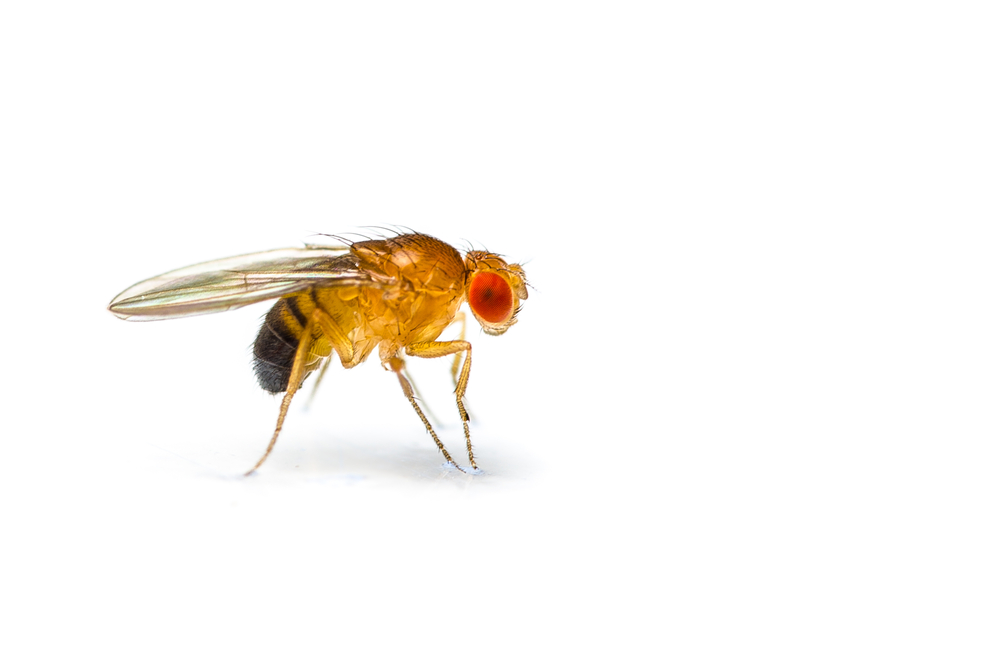Hyper-Excited Neurons Disrupt Perception in Fragile X Syndrome, Fruit Fly Study Suggests

Mutations in the FMR1 gene — the underlying cause of fragile X syndrome — reduce the load of inhibitory signals in the brain, resulting in “noise” that halts the ability to perceive and discriminate cues from the outside world, a study of fruit flies suggests.
The study, “Reduced Lateral Inhibition Impairs Olfactory Computations and Behaviors in a Drosophila Model of Fragile X Syndrome,” was published in the journal Current Biology.
People with fragile X syndrome have low levels of the GABA neurotransmitter, a chemical messenger that nerve cells use to communicate with neighboring brain cells.
In fact, loss of the FMR1 gene results in a decrease in GABA receptors in both mice and flies, suggesting a link between GABA signaling and fragile X.
The GABA neurotransmitter is an inhibitory neurotransmitter, meaning that neurons release GABA to fine-tune communication between brain cells and prevent “noise” from building.
Excitatory and inhibitory neural signals are the “yin and yang” of the brain. Excitatory signaling from one nerve cell to the next makes the latter cell more likely to fire an electrical signal. Inhibitory signaling makes the latter cell less likely to fire. This is the basis of communication between nerve cells in the brain.
To explore the role of GABA signaling in fragile X, researchers at the VIB Center for the Biology of Disease , Belgium, working with a team of international colleagues, used the Drosophila (fruit fly) model of fragile X.
“The Fragile X protein in fruit flies is very similar to the Fragile X protein in humans,” Emre Yaksi, PhD, said in a press release. Yaski is a professor at the Kavli Institute for Systems Neuroscience and Centre for Neural Computation, Norway, and the fruit fly study’s lead author.
The flies were engineered to lack the gene equivalent to the human FMR1 gene and were put through a series of behavioral and brain function tests.
In an odor-induced attraction and aversion test in which researchers used ethyl acetate (known to induce attraction in flies) and benzaldehyde (which induces aversion), fragile X flies performed significantly poorer than the wild-type (control) flies, suggesting that odor behavior is compromised in these animals.
Additional experiments showed that while the wild-type flies had more inhibitory brain responses, fragile X flies had more excitatory responses.
“Our research indicates that patients with Fragile X syndrome have ‘noisier’ brains, impairing their ability to manage and understand the flow of information and making it more difficult to interact with the world. This may explain why many patients show anxiety, have learning and communication difficulties and may fall on the autism spectrum,” Yaksi said.
Using new technological tools developed by the team, researchers were able to perform electrophysiological recordings and process images of individual fruit fly neurons.
“These new tools helped us test our hypotheses much more rapidly, as they allowed us to collect and process large datasets more efficiently,” added the study’s first author, Luis Franco, PhD.
Researchers observed that inhibitory signaling is reduced in the flies’ antennal lobe, the region in the brain that processes the information from olfactory sensory neurons (those that detect and transmit odorant information to the central nervous system), namely in projection neurons and local interneurons.
To test the role of GABA, the team lowered the number of GABA receptors in the antennal lobe neurons, which impaired flies’ olfactory behavior.
These findings suggest that lack of a functional FMR1 gene “has a direct impact on sensory processing and animal behavior through a weakening of lateral inhibitory connections, which broadens response tuning of principal neurons,” the researchers wrote.
“This mechanism might be ubiquitously present in the brain of [fragile X] patients,” they added, where “reduced GABAergic inhibition could produce hyperexcitable neuronal circuits … which not only explains symptoms such as hypersensitivity, hyperarousal, or epilepsy but also potentially contributes to the misprocessing of information across the brain, which would have severe effects on human behavior.”
Overall, these results support the potential for therapies that enhance brain inhibitory circuits to reduce anxiety and epileptic seizures in fragile X patients, but also to improve the way they process sensory information.
“Future research could include testing whether sensory discrimination tasks such as discriminating odors, auditory tones or colors/visual patterns could be used for early diagnosis of Fragile X syndrome. Our next steps are to test drugs that enhance inhibition that are already approved for use in humans, such as benzodiazepines and barbiturates — first in models, and then in the clinic,” said the study’s lead author, professor Bassam Hassan, PhD, at the Brain & Spine Institute, France.






